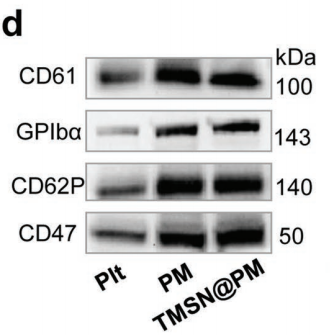CD47 Antibody - #DF6649
製品説明
*The optimal dilutions should be determined by the end user. For optimal experimental results, antibody reuse is not recommended.
*Tips:
WB: For western blot detection of denatured protein samples. IHC: For immunohistochemical detection of paraffin sections (IHC-p) or frozen sections (IHC-f) of tissue samples. IF/ICC: For immunofluorescence detection of cell samples. ELISA(peptide): For ELISA detection of antigenic peptide.
引用形式: Affinity Biosciences Cat# DF6649, RRID:AB_2838611.
折りたたみ/展開
Antigen identified by monoclonal antibody 1D8; Antigenic surface determinant protein OA3; CD 47; CD47; CD47 antigen (Rh-related antigen, integrin-associated signal transducer); CD47 antigen; CD47 glycoprotein; CD47 molecule; CD47_HUMAN; IAP; Integrin Associated Protein; Integrin associated signal transducer; Integrin-associated protein; Leukocyte surface antigen CD47; MER 6; MER6; OA 3; OA3; OTTHUMP00000041152; OTTHUMP00000041153; Protein MER6; Rh related antigen; Surface antigen identified by monoclonal antibody 1D8;
免疫原
A synthesized peptide derived from human CD47, corresponding to a region within C-terminal amino acids.
Very broadly distributed on normal adult tissues, as well as ovarian tumors, being especially abundant in some epithelia and the brain.
- Q08722 CD47_HUMAN:
- Protein BLAST With
- NCBI/
- ExPASy/
- Uniprot
MWPLVAALLLGSACCGSAQLLFNKTKSVEFTFCNDTVVIPCFVTNMEAQNTTEVYVKWKFKGRDIYTFDGALNKSTVPTDFSSAKIEVSQLLKGDASLKMDKSDAVSHTGNYTCEVTELTREGETIIELKYRVVSWFSPNENILIVIFPIFAILLFWGQFGIKTLKYRSGGMDEKTIALLVAGLVITVIVIVGAILFVPGEYSLKNATGLGLIVTSTGILILLHYYVFSTAIGLTSFVIAILVIQVIAYILAVVGLSLCIAACIPMHGPLLISGLSILALAQLLGLVYMKFVASNQKTIQPPRKAVEEPLNAFKESKGMMNDE
種類予測
Score>80(red) has high confidence and is suggested to be used for WB detection. *The prediction model is mainly based on the alignment of immunogen sequences, the results are for reference only, not as the basis of quality assurance.
High(score>80) Medium(80>score>50) Low(score<50) No confidence
研究背景
Has a role in both cell adhesion by acting as an adhesion receptor for THBS1 on platelets, and in the modulation of integrins. Plays an important role in memory formation and synaptic plasticity in the hippocampus (By similarity). Receptor for SIRPA, binding to which prevents maturation of immature dendritic cells and inhibits cytokine production by mature dendritic cells. Interaction with SIRPG mediates cell-cell adhesion, enhances superantigen-dependent T-cell-mediated proliferation and costimulates T-cell activation. May play a role in membrane transport and/or integrin dependent signal transduction. May prevent premature elimination of red blood cells. May be involved in membrane permeability changes induced following virus infection.
Cell membrane>Multi-pass membrane protein.
Very broadly distributed on normal adult tissues, as well as ovarian tumors, being especially abundant in some epithelia and the brain.
研究領域
· Environmental Information Processing > Signaling molecules and interaction > ECM-receptor interaction. (View pathway)
参考文献
Application: WB Species: Mouse Sample:
Application: WB Species: Mouse Sample: CT26 cells
Restrictive clause
Affinity Biosciences tests all products strictly. Citations are provided as a resource for additional applications that have not been validated by Affinity Biosciences. Please choose the appropriate format for each application and consult Materials and Methods sections for additional details about the use of any product in these publications.
For Research Use Only.
Not for use in diagnostic or therapeutic procedures. Not for resale. Not for distribution without written consent. Affinity Biosciences will not be held responsible for patent infringement or other violations that may occur with the use of our products. Affinity Biosciences, Affinity Biosciences Logo and all other trademarks are the property of Affinity Biosciences LTD.








